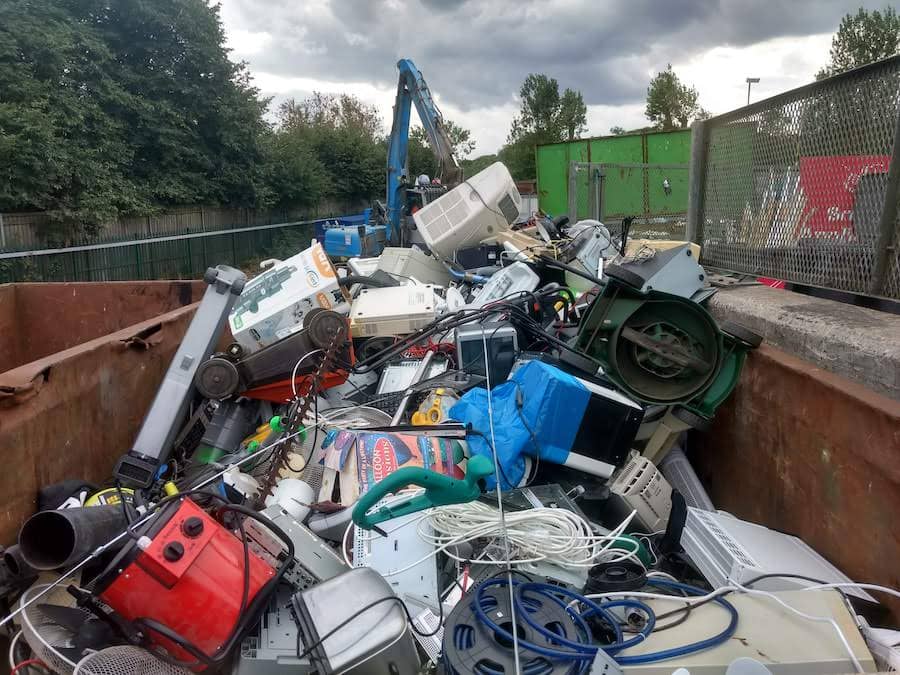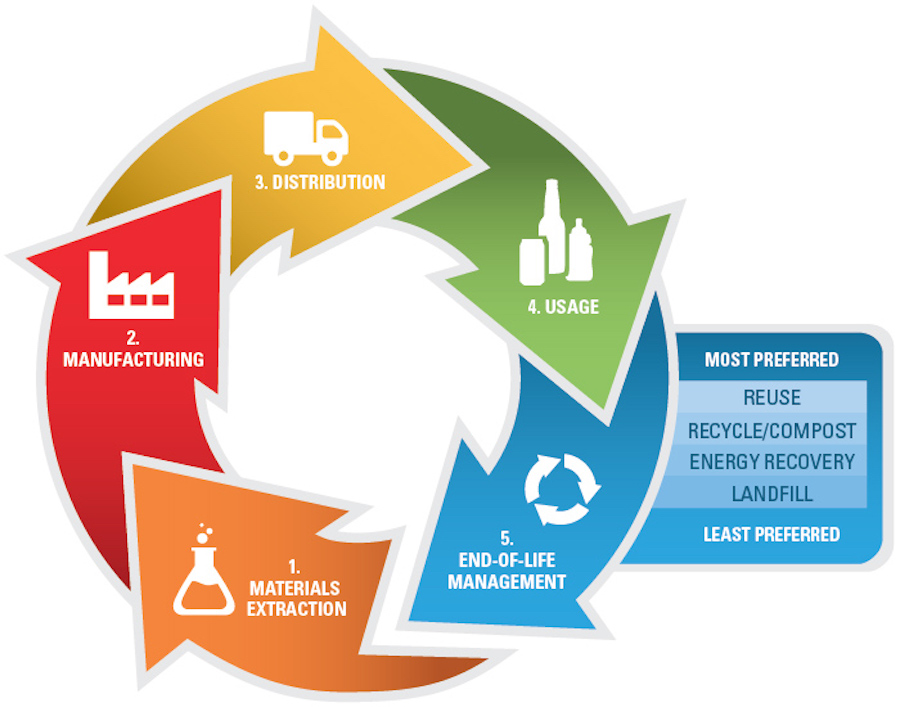Sustainable Materials Management (SMM): An Overview
Our finite planet cannot indefinitely support our growing global population if we continue to utilize resources the way we have done for the last century. It is imperative that we innovate and implement more sustainable materials and completely revamp our waste management procedures.
Sustainable Material Management (SMM) is the systematic approach to using products and resources more effectively over their life cycles. The goal of SMM is to shift society away from materials whose production or disposal has significant adverse environmental effects.
The US Environmental Protection Agency (EPA) has laid out a three-pronged approach to sustainable materials management to meet its goals:
- “Use materials in the most productive way with an emphasis on using less.
- Reduce toxic chemicals and environmental impacts throughout the material life cycle.
- Assure we have sufficient resources to meet today’s needs and those of the future.”
These three broad goals focus on the entire life-cycle of materials, with a particular focus on their end-of-life management.
The program will shift the priorities of this approach each fiscal period, but for the 2017-2022 budgetary period, their focus has been:
- The built environment - construction, maintenance, and end-of-life management for roads, bridges, and other national infrastructure
- Sustainable food management – reducing food-related waste
- Sustainable packaging – reducing the amount of packaging that ends up as municipal waste

Honeycomb-structure composite material (CC)
Why do we need sustainable materials?
About 35.7 million tons of plastic are generated each year in the US alone, with only 8.7% of that being recycled. But plastic is not the only issue. Most of the products we use today, from cell phones and computers to houses and cars, have a linear life cycle.
Resources are extracted and processed to make a good. It is used and then thrown away. Americans add 292.4 million tons of waste to landfills each year, amounting to about 1,800 pounds per person per year.
Globally, we produced about 90 billion tons of resources in 2017. That number is expected to double by 2050. Resource production helps empower and improve the living standards of people in impoverished nations. But it also contributes to climate change, chemical run-off, solid waste accumulation, biodiversity losses, and changes in land use.
The linear, cradle-to-grave life-cycle that has dominated over the last century has led to many environmental and public health issues. Rivers and oceans are becoming more polluted and full of debris, including many materials and chemicals that persist for hundreds of years or even indefinitely.
We are throwing away our resources, and as they become more scarce, they become more expensive. If we are to continue improving the living standards of all people, we must solve these issues to protect our health and our planet’s.

Materials collected for recycling (CC)
What makes a material sustainable?
Truly sustainable materials use few resources in their production and transportation and have a cradle-to-cradle life cycle. Unfortunately, while some examples of such products exist, most of what we use today is not sustainable.
Many products that are labeled with terms related to sustainability (e.g., recyclable, post-consumer, biodegradable, etc.) could be misleading because they refer to only one part of the material’s life cycle.
If we are to create truly sustainable products, we must instead shift to “life-cycle thinking.” This means taking into account not just one stage of a product’s life but every stage, from extraction to end-of-life management.
The fact that very few of the materials we use are sustainable is why the EPA’s first point is to focus on using less. Today, 64% of global CO2 emissions result from processing and energy production. The best way to reduce our carbon footprint is to use less and use productively.

The major stages of a material lifecycle (EPA)
How can we make a material sustainably managed?
To sustainably manage a material, we have to assess its entire life cycle, from production to end-of-life management. After using less and more productively, we need to address how things are made and transported.
As the second point of the EPA’s sustainable materials management spells out, we need to use innovation to reform industries with significant environmental impacts or those that release toxic chemicals into the environment.
We need to devise cleaner alternatives to many of our most polluting industries and develop ways to reduce the externalities of the sectors for which alternatives are not yet available.
How is sustainable material management achieved?
Traditional materials management was defined as purchasing the highest quality of goods and resources and the lowest cost to the company. This definition was entirely focused on the company’s bottom line and not on the broader environmental or social-economic impacts.
Sustainable Materials Management has to address the production, transportation, use, and disposal of materials and goods. This may seem like a lofty goal, but we already have most of the technology and innovations needed for this shift.
Managing production
Managing production can include shifting to renewable resources and energy sources. It can be using recycled and reclaimed inputs rather than virgin resources. This means utilizing waste streams to create new products or closing the loop on product life cycles by reusing or restoring.
Managing transportation
Managing transportation means using less energy to move resources from one place to another or establishing production facilities close to where the resources are extracted or goods are sold.
The cheap cost of oil in the 20th century has led to a large centralized production chain for many products with global distribution. This has led to products having a higher carbon footprint and creating socio-economic injustices for the communities where resources are extracted. Often, these communities have to deal with the environmental consequences without receiving the economic benefits.

Coltan mine in Rubaya, DR Congo (CC)
Managing use
Managing use means creating products that are designed to last and be reused. Furthermore, we need to shift to less-polluting products over their lifespan, as is being done with electric vehicles.
Managing disposal
Managing disposal, in this case, does not mean designing better waste management systems but ensuring that products end up back in production facilities after use. A good example would be the new law in Maine, USA, which shifts the responsibility for waste collection and reuse from the consumer to the producer. Such measures need to be taken with everything we use to strive towards not throwing anything away one day.
Towards a more sustainable future
Our materials-based society has brought prosperity and improved the lives of millions. But it has also brought incalculable damage to the planet and its ecosystems. By adjusting to a sustainable management approach that considers the material’s entire life cycle, we can reduce these issues while still allowing for economic growth.
If the goal is to ensure the health of humans, the planet, and the economy simultaneously, then we must account for everything that happens to natural resources that “come from and return to the Earth.”
If you enjoyed reading this article, you can read more related content here: